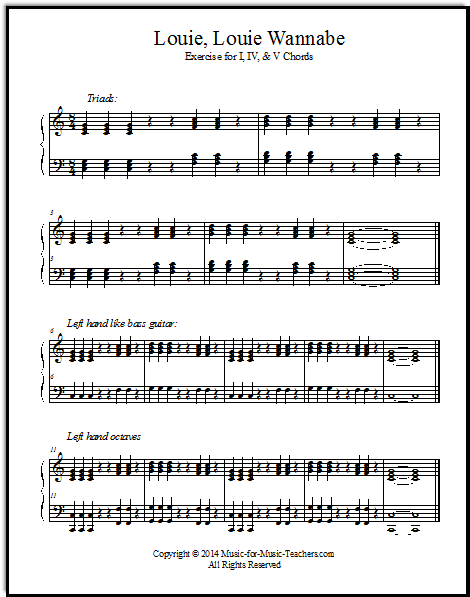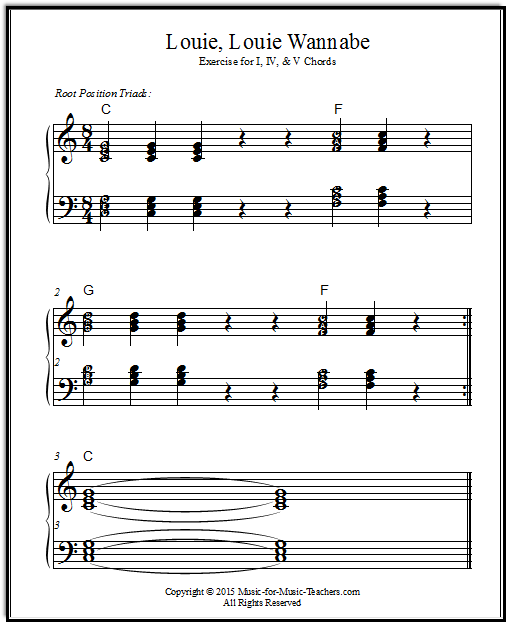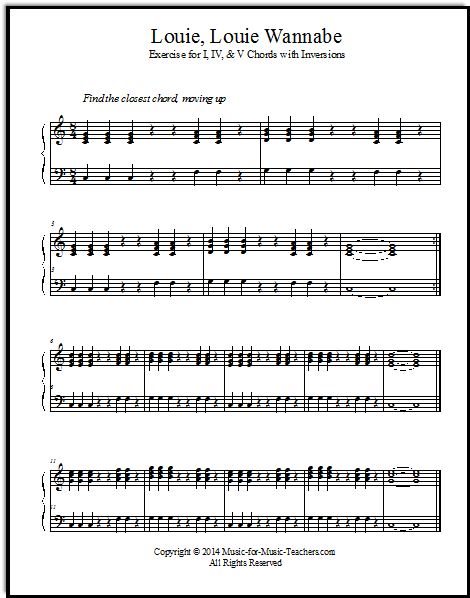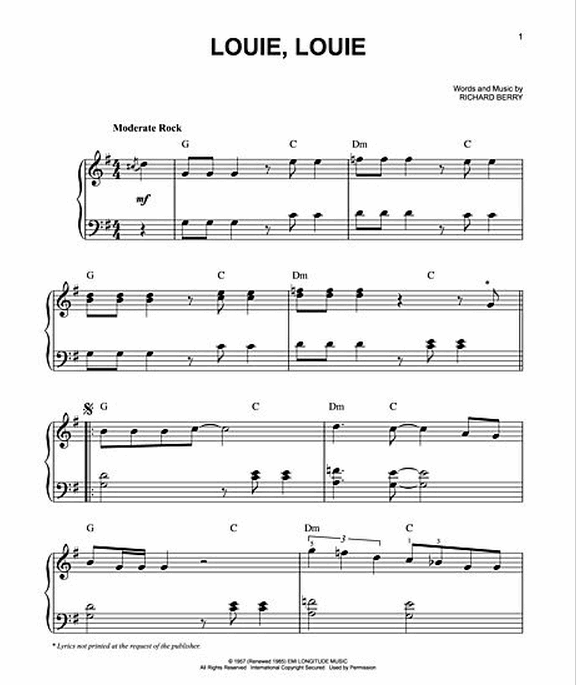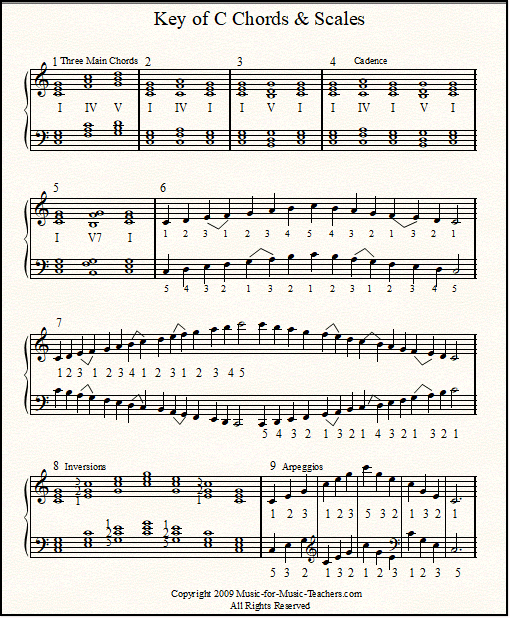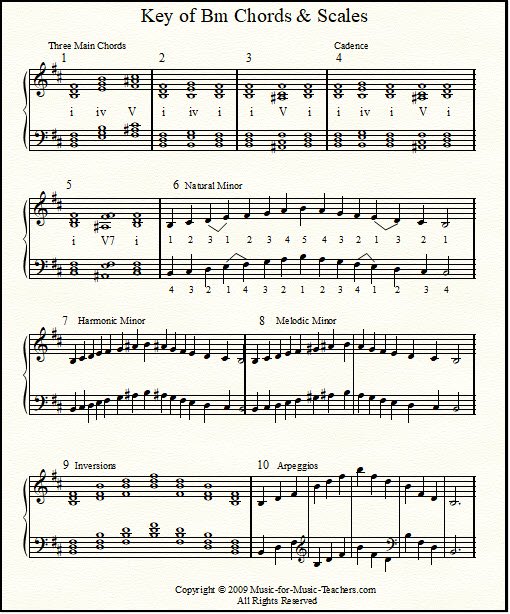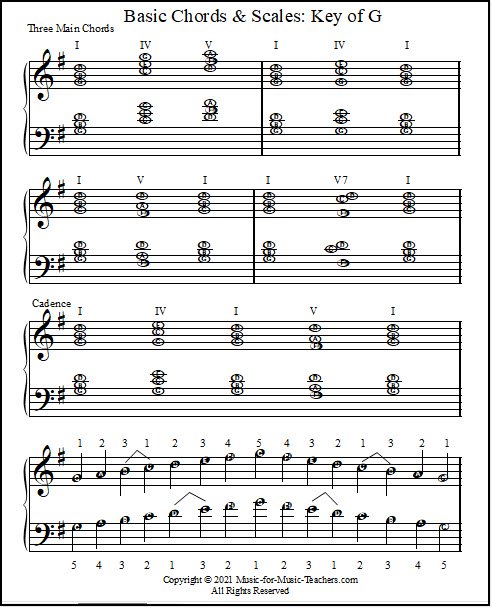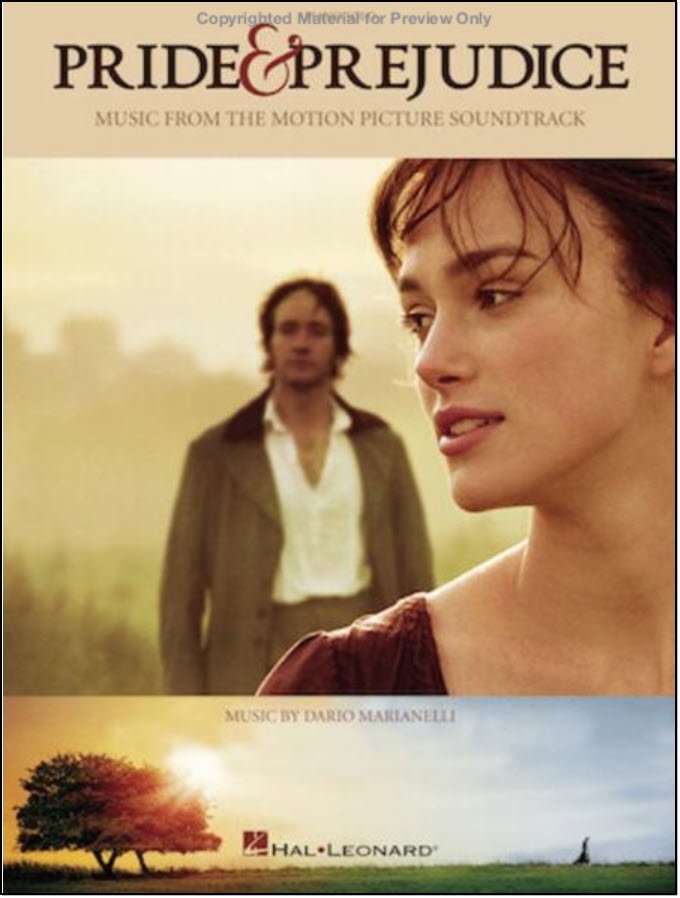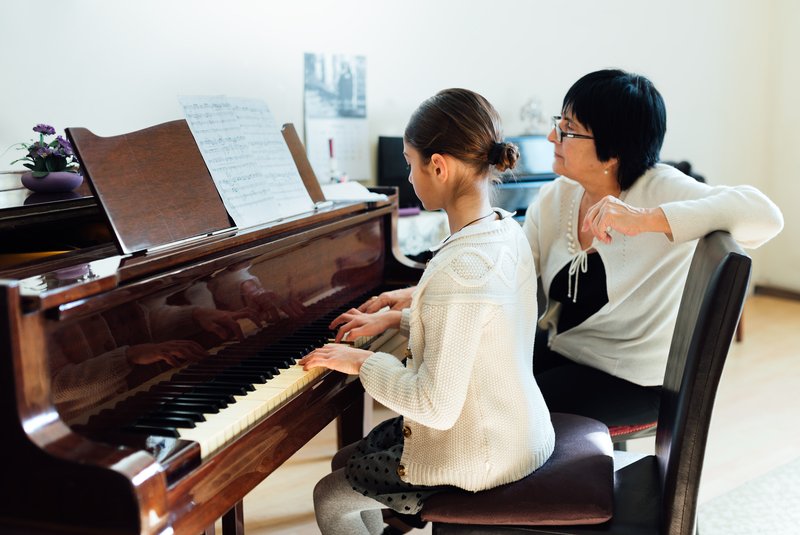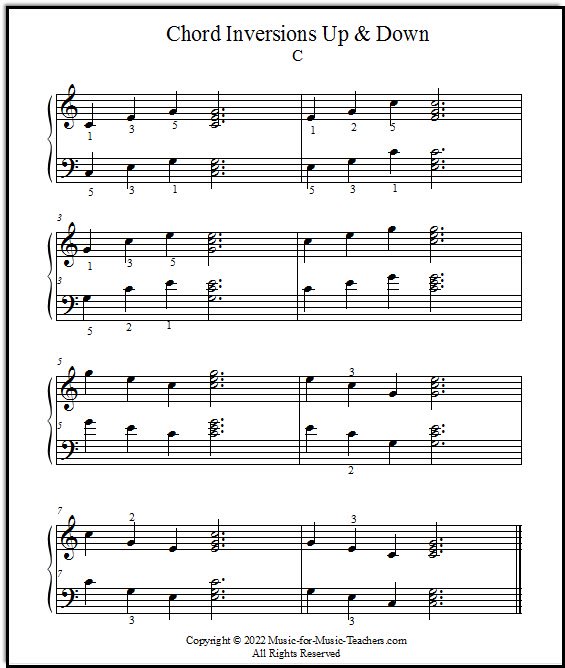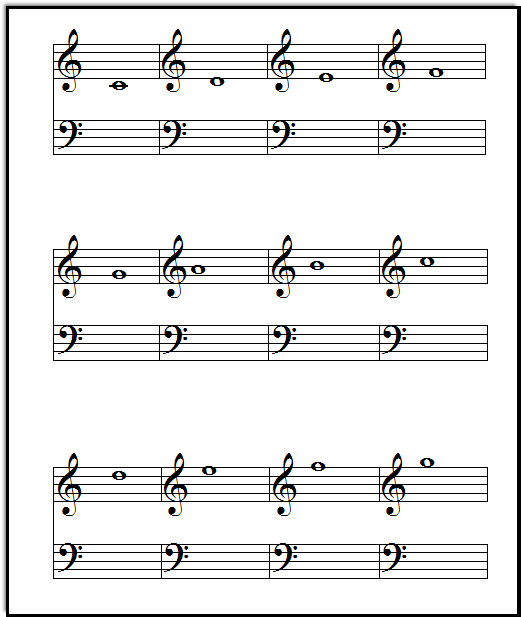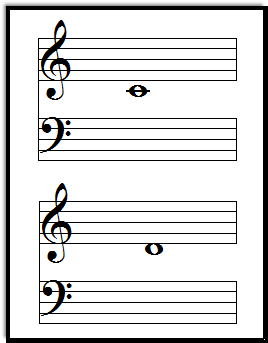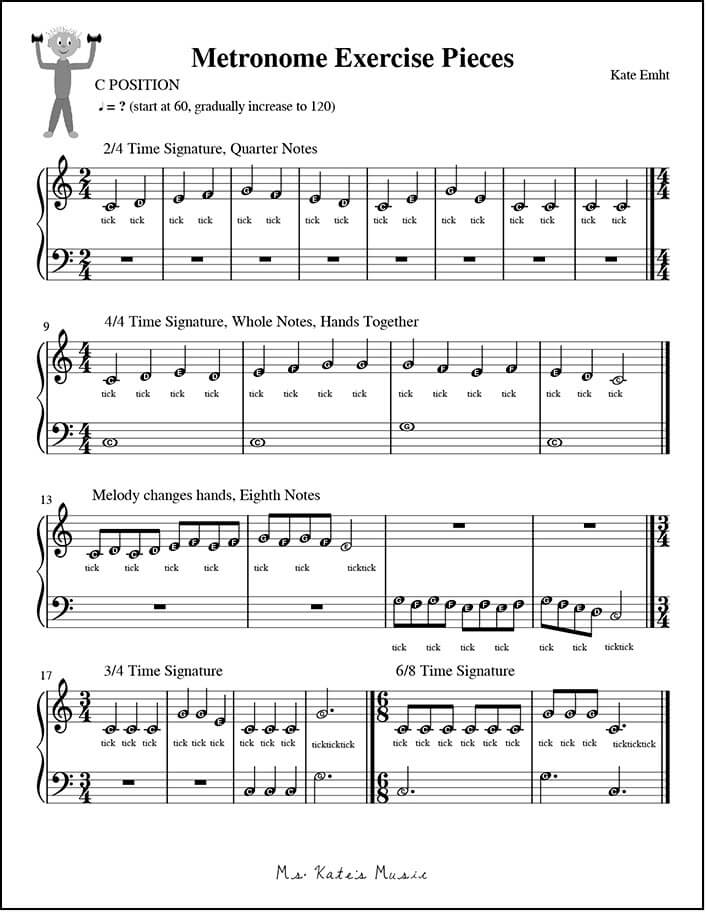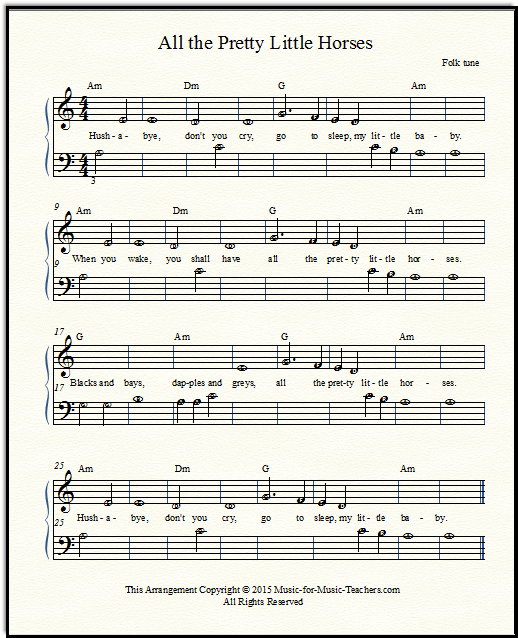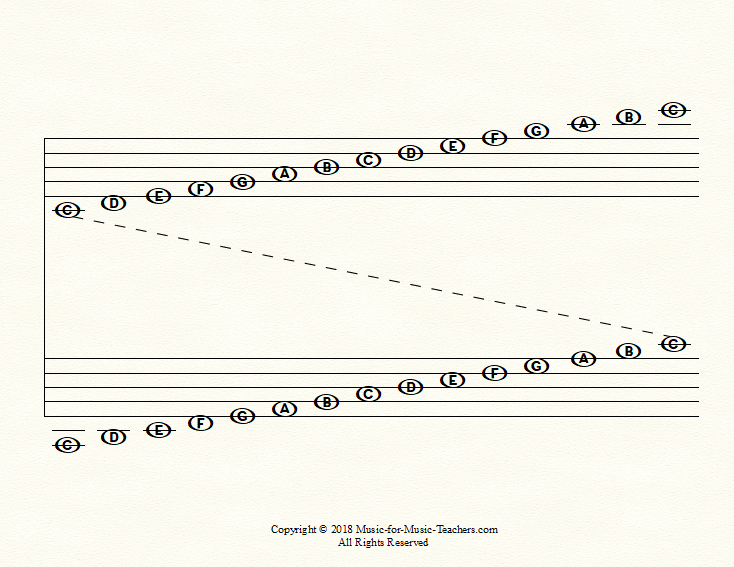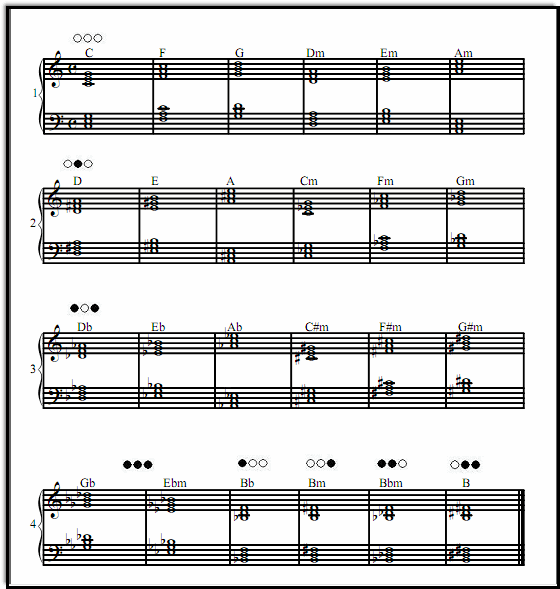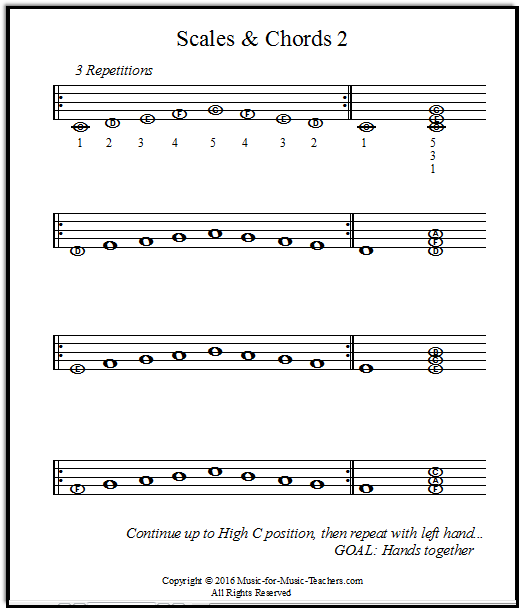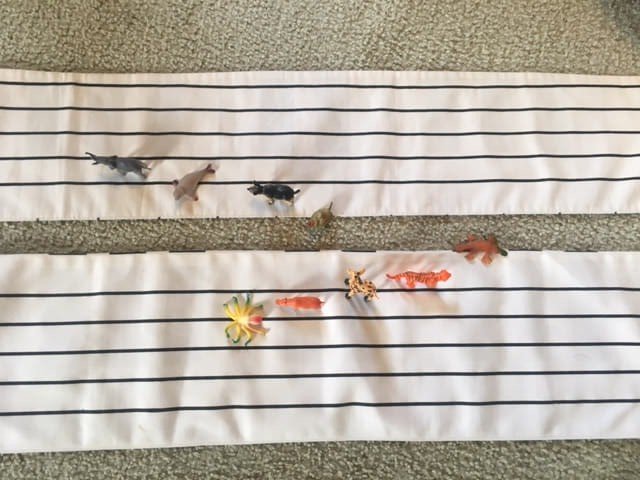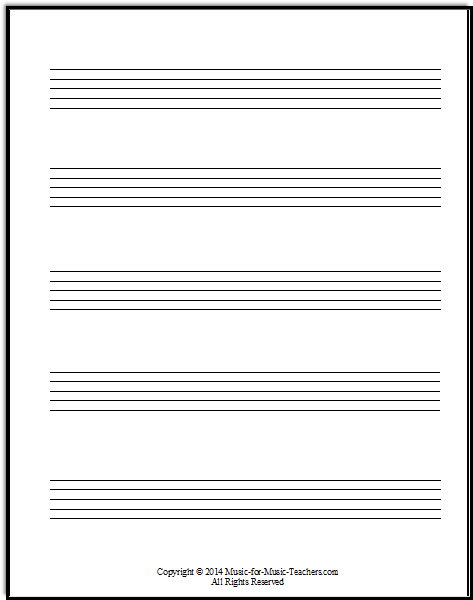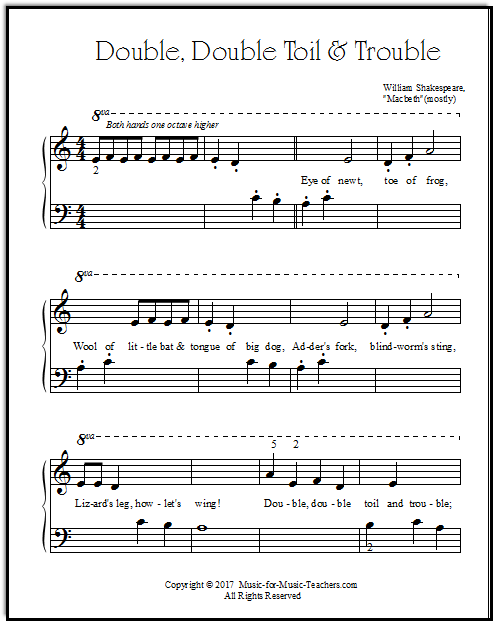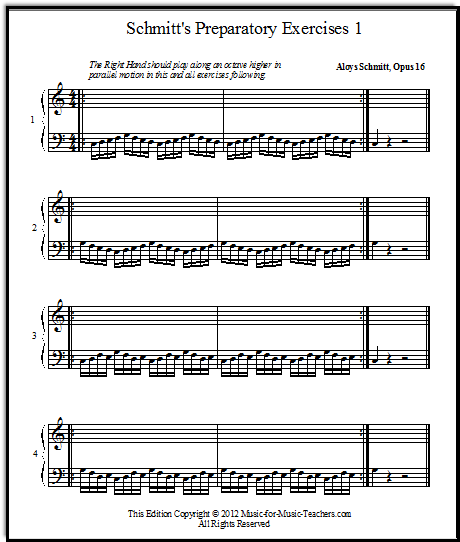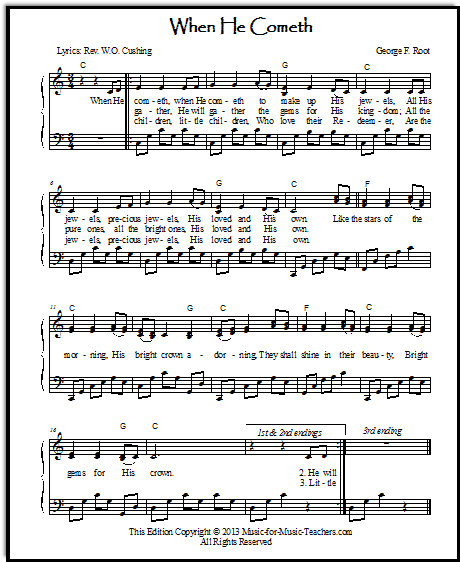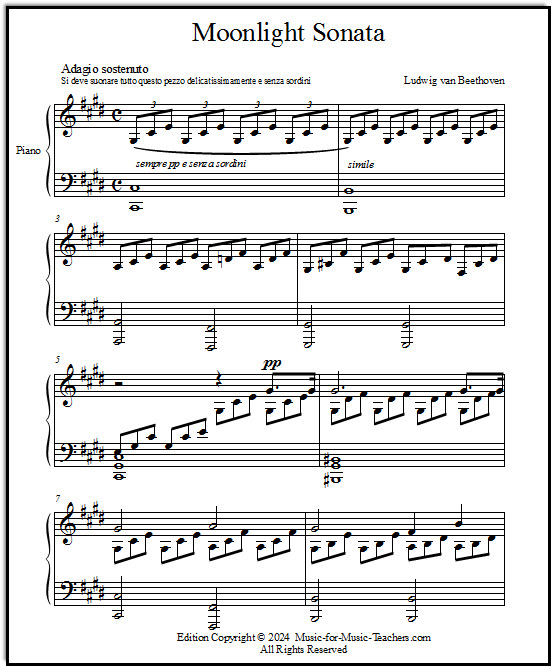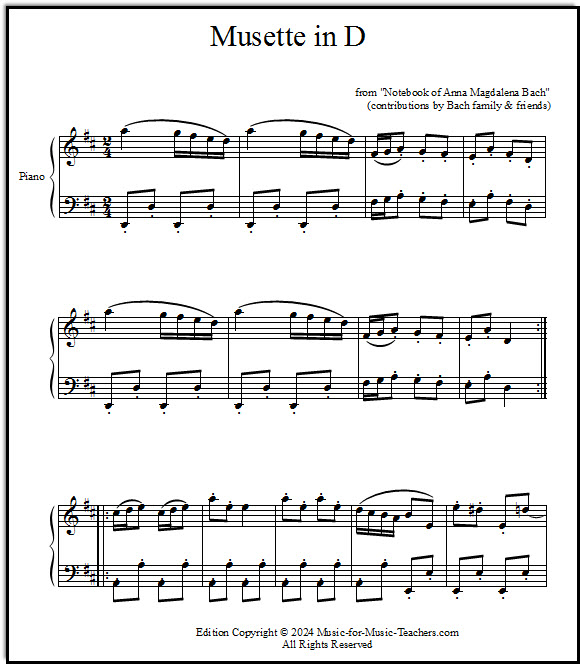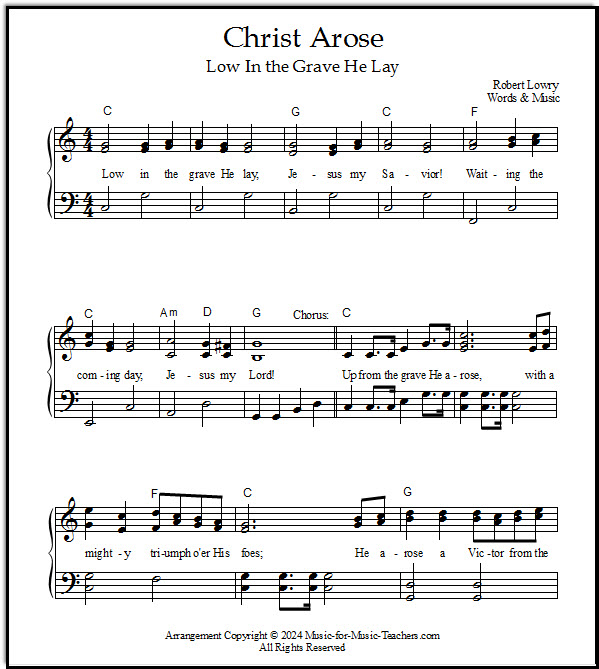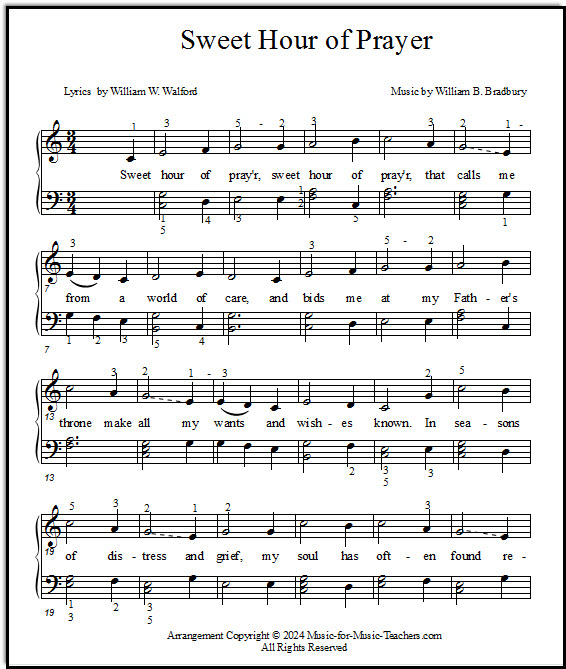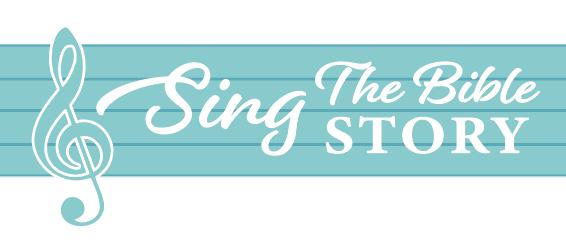Louie Louie
Sheet Music for Piano
Louie Louie sheet music for piano - your piano students will think these chord exercises are cool!
Almost all of them will have a faint recognition of the chord pattern, though they may not quite remember from where.
Scroll down the page for the free downloadable PDF links:
Please scroll down the page for the download links.
I tell them, "Yes! You have heard this at basketball games!" And they think they have.
I call these exercises "Louie Louie WANNABE"
If you really KNOW Louie Louie as performed by The Kingsmen, you'll recognize that the V chord (5 chord) in this series of chord progressions should actually be G MINOR.
I've substituted a G major chord, which is the V chord in the key of C.
This is a great exercise
I've been giving it to my students for a few years now, recycling it every couple of years, so they continue to refine their technique and understanding of "The Three Main Chords."
Here is an easy-to-read version for first-year students, with letters in the first chord of each group:
Please scroll down the page for the download links.
Rhythm MAKES this exercise
First, they start in this key as shown, the key of C.
The rhythm is crucial; if they don't get the rests in there correctly, the song just won't be the same!
So for some kids who don't catch on right away to the rhythm, I have them CLAP each rest.
Start with tapping
We'll start without the chords, with the piano lid down. Using our hands to tap on the lid for each chord, we'll say,
"C-C-C" (clap! clap!) "F-F" (clap!) "G-G-G" (clap! clap!) "F-F" (clap!)
Then we do it in slow motion on the piano keys, still clapping, if necessary.
In actuality, I didn't use to give my students any sheet music to go with this exercise.
Hearing & feeling the music is the goal
I don't want them to read it; I want them to HEAR it and THINK it.
I want them to think through the chord relationships. So when I assigned it on their lesson sheets, it looked like this:
I I I IV IV V V V IV IV Repeat.
That was it! Except I also labeled below the Roman numerals the first set of chords (the key of C chords):
C C C F F G G G F F
And I would leave a bit of room in between the chords so that I can write little squiggles in between for the quarter rests.
Now, I tend to give them the easy-to-read version, because it also helps them with remembering it, when they get home.
Start with one hand, if necessary
The first week, they might do Louie Louie with just one hand, in triads.
If they are very new to chords, they might use open chords instead, or even just a bass note ("like a bass guitar", I tell them), but I find that they do mostly want to master the triads for this exercise.
It's that cool!
(Oh, and I don't CALL it an exercise. This is always just "Louie Louie.")
So the first step is just triads, 3-note chords.
When those seem easy enough, I ask them to turn the left hand part into a single bass note, like a bass guitar.
Fun! The octaves in the left hand will wait until they have big enough hands.
Transposing from one key to the next
But then the work starts. As soon as they understand that the I, IV, and V chords in the key of C are C, F, and G, then it's time to move on to the key of D!
Then, usually, G, and A, then F, and E, and lastly, B. That is generally the order in which I assign the keys to first-timers, while the students continue to play in all the previous keys.
Last of all come the keys of Db, Eb, Gb, Ab, and Bb.
Yes, these are hard, and many students won't make it all the way through the first time (because this exercise will finally run its course after a few months).
However, they will have begun work on a foundation to which they can return later.
When they (inevitably) struggle to figure out where the IV and V chords start, I remind them to start on the tonic note (the same note as the key they are in, or the "HOME key") and count up "Tonic, whole, whole, half, whole," or "One, two, three, four, five."
Chord inversions
After their first journey through Louie Louie, when they can come back and perform all 12 major keys in root position, it's time for students to try the chord inversions!
Here's what that looks like:
Please scroll down the page for the download links.
This is WAY HARDER than playing in root position - but it is still a fun way to reinforce the chord inversions piano students need to know in order to play classical music and even pop music easily.
A performance by The Kingsmen
Now here are the Kingsmen, with their incredibly popular music (but mystifying lyrics...)
Part of the experience of learning Louie Louie for my students is hearing (from me) the story about how the FBI investigated the Kingsmen recording for 2 years.
Allegedly, this was because of accusations that the lyrics were subversive, or broke obscenity laws.
Eventually, they concluded that NOBODY could understand what the words were. I have to agree!
The link for Louie Louie sheet music:
Download Louie Louie sheet music for piano exercise
The simplified version for newer readers:
Download rock music with letters in some of the notes
The chord inversions arrangement of this rock music:
Download Louie Louie pattern with chord inversions
And here is the real copyrighted music, available from Sheetmusicplus. This arrangement is student-friendly!
Music for Music Teachers has other great free resources for piano teachers! Take a look:
Rote Learning - leaving the written page behind (or treating it like a map!)
Recent Articles
-
When He Cometh "Jewels" Hymn: Piano, Guitar, Vocal
When He Cometh or "Jewels" is an old-timey sounding hymn. Very sweet & very simple, this is one your piano students & vocalists can learn from! -
Moonlight Sonata: How to Play This Piece Full of Black Keys & Triplets
Moonlight Sonata: How to play this difficult piece full of black keys & triplets? Use large notes, lots of white space, & letters inside the note heads - easy! -
Bach Well-Known Pieces for Piano: the Musette in D, a Crowd-Pleaser!
Some of the best Bach well known pieces include those from the "Notebook for Anna Magdalena Bach." Among piano pieces, "Musette" is perhaps the most joyous! -
Christ Arose Sheet Music: Resurrection Day Song for Piano or Guitar
"Christ Arose" sheet music is perfect for Easter, or as many Bible believers say, "Resurrection Sunday." Mixing somberness & triumph, this song explains Easter. -
Sweet Hour of Prayer Hymn Sheet Music for Late Elementary Piano
Sweet Hour of Prayer hymn music has been around a long time, and is greatly loved still. Check out 4 arrangements for beginning to elementary piano, & guitar!
Interested in songs from the Bible for your students or church? Check out my other website, SingTheBibleStory.com!
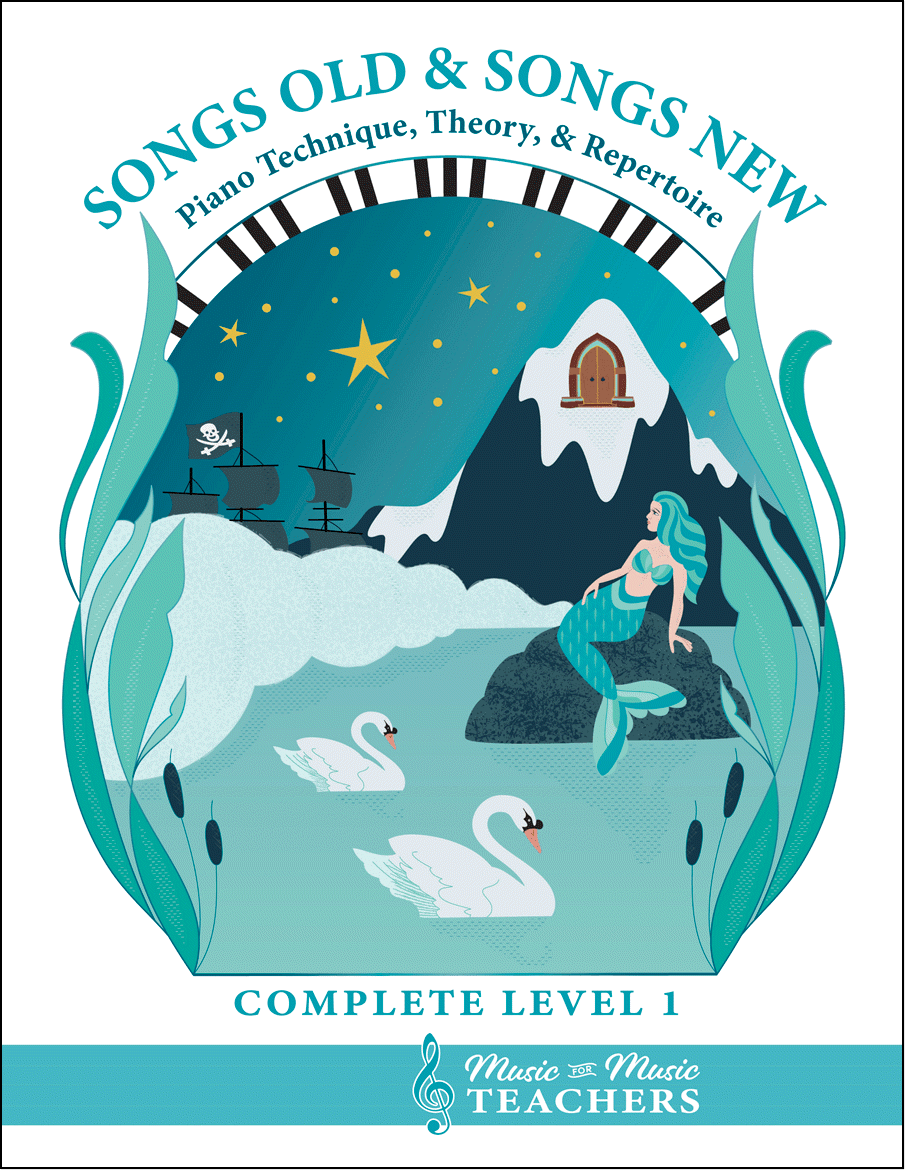
All the first-year material I give my beginner students.
Piano keyboard sheets, scales, chords, note-reading exercises, and over 256 pages of music!

This beautiful song book for piano & voice "Esther, For Such a Time as This", available as a digital download, tells the riveting story of the time when Jews in ancient Persia faced a foe named Haman, and how a brave young queen risked her life to save her people.
A good choice for a singing story-teller, an operatic group, a short theater production, or a class of children!
This book is also available from Amazon as a paperback.
This book is available as a digital download from this site. Visit this page to see some free examples from the book.
It is also available from Amazon as a paperback!
This is the perfect easy start for little pianists.
And when they start reading white-key notes on the staff, this is a fun easy resource to say each week, "Choose a new black-key song at home this week and figure it out to show me next lesson!" They will be spending more time at the piano.
A perfect read aloud storybook
for little boys or girls.
The Adventures of Tonsta highlight the travels of a very young boy with a good heart, who goes about helping folk in trouble.
With a red cap on his head and a sack of tools slung over his shoulder, Tonsta seems to meet people in distress wherever he goes.
Lots of trolls in this book - including one who gives him a Christmas gift!
Sign up for "Take Note!" to see what's new every month.
Comments
Do you have a funny story about this music, or does it remind you of something you'd like to share with other readers? Do you have a question? I'd love to hear it!
Please note that all comments are moderated, and will not appear until I have approved them. Also, IF YOU ARE ASKING FOR MUSIC THAT IS NOT IN THE PUBLIC DOMAIN, YOUR REQUEST WILL BE IGNORED. That's pretty much any music written in the last 75 years...
About the Author

Hi, I'm Dana! (Say that like "Anna".) I'm the owner of Music-for-Music-Teachers.com, and a newer site, SingTheBibleStory.com.
Like some of you, I've been playing the piano since early childhood, and have added a few other instruments along the way, plus an interest in arranging and composing music.
You can find out more about me and the reason for this website at my About Me page.
